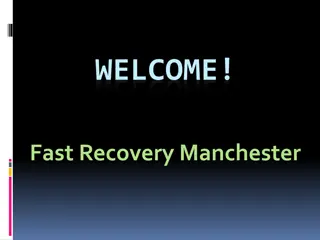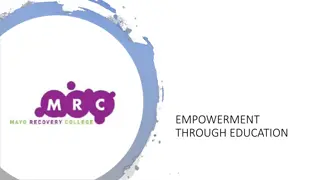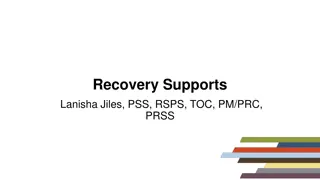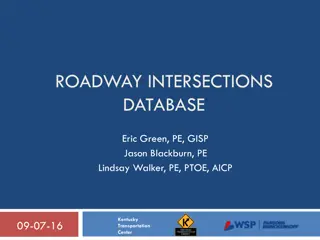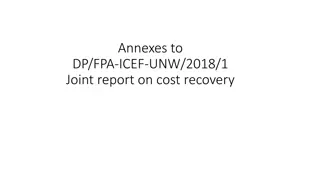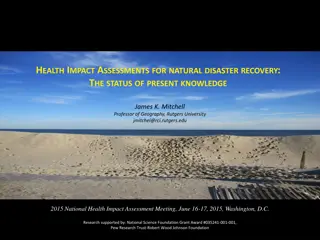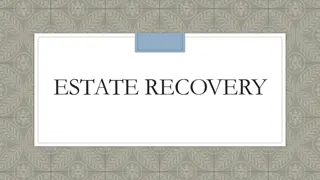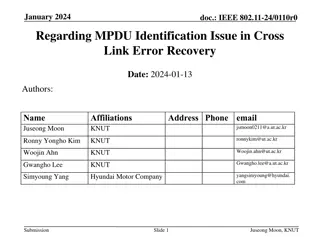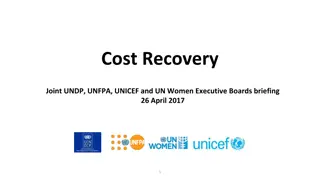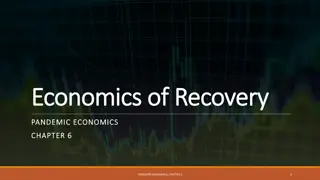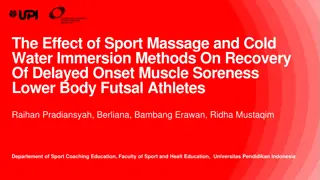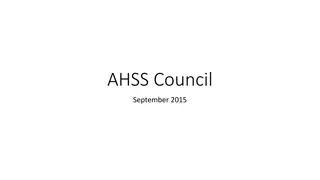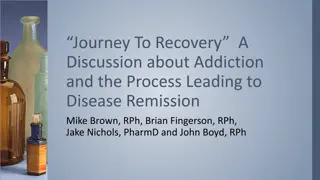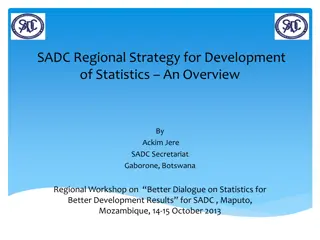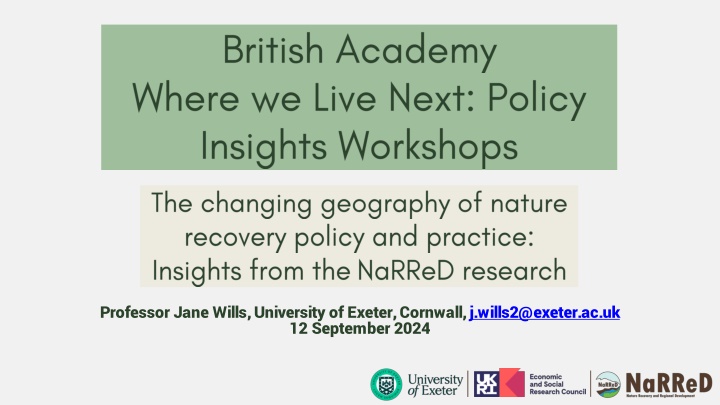
Nature Recovery and Regional Development: Exploring Intersection Between NR and Socio-Economic Paths
Three-year ESRC funded project focusing on Nature Recovery and Regional Development, investigating the connection between nature conservation and socio-economic growth. The project includes partnerships with local authorities to map priority areas for nature recovery, examining challenges, opportunities, and public engagement strategies. It also aims to foster a broad civic coalition involving councils, conservationists, farmers, and businesses to enhance biodiversity and habitat quality.
Download Presentation

Please find below an Image/Link to download the presentation.
The content on the website is provided AS IS for your information and personal use only. It may not be sold, licensed, or shared on other websites without obtaining consent from the author. If you encounter any issues during the download, it is possible that the publisher has removed the file from their server.
You are allowed to download the files provided on this website for personal or commercial use, subject to the condition that they are used lawfully. All files are the property of their respective owners.
The content on the website is provided AS IS for your information and personal use only. It may not be sold, licensed, or shared on other websites without obtaining consent from the author.
E N D
Presentation Transcript
Professor Jane Wills, University of Exeter, Cornwall, j.wills2@exeter.ac.uk 12 September 2024
Three-year Economic and Social Research Council (ESRC) funded project: Nature Recovery and Regional Development (NaRReD). Exploring the intersection between NR and socio-economic development paths and outcomes planning, business, jobs, skills, quality of life. In partnership with Britain s Leading Edge (BLE), a network of 12 local authorities on the rural-periphery of England (places without major cities). Local authorities rich in natural capital with relatively weak economies and significant socio-economic challenges. Preliminary focus on Local Nature Recovery Strategies (LNRS) and the enhanced duties for local authorities to map priority areas for local nature recovery (for 2025) as determined by the Environment Act (2021). Interviews with local authority officers to explore approach, opportunities and challenges, public engagement, integration with local planning and development paths.
The changing geography of nature recovery Beyond designations and specialists (SSSIs, NNR/NMRs, National Landscapes, Ramsar sites ) Beyond conservation or ecological restoration to nature recovery - working definition: action taken to improve habitat quality, coverage and connections, to enhance biodiversity and species abundance, requiring a place-based collaborative and community-focussed approach LNRS mapping existing sites and new opportunities through consultation. Potential to foster a broader civic coalition councils (inc parishes), conservationists, farmers and land managers, businesses, communities.
Ensuring that precious habitats are created, protected and extended, with space for other animals and organisms to live and flourish, with support from the people living there. Via policy that is developed in ways that reflects local priorities and capacity to deliver. Ensuring integration with other priorities - without being trumped from others or above. Mobilising appropriate private sector investment (eg BNG and biodiversity credits). Enabling access to the ELM scheme and scaling up activity for nature-positive farming and land management. Identifying and mobilising the broadest coalition of actors to act for nature in the local area. Ensuring delivery with strong political leadership (from in and beyond the locality) and sufficient resources. The challenges faced in delivering place-sensitive nature recovery
Local authority leadership. Oversight and support from Natural England and strong links with other government bodies such as the Environment Agency. Partnerships with conservation organisations and integration of ecological recorders and records. Experimentation with Systematic Conservation Management mapping (Cornwall). Engagement with key groups of stakeholders in targeted events (especially farmers and land managers). Leadership from the grassroots (hyper-local parishes Shropshire and the IoW). Public communication and engagement events. Creation of new platforms to attract private sector investment. Thinking ahead to delivery. Emerging solutions and the diversity of place- sensitive visions, policies and practices
The new geography of NR visualised via the LNRS maps can engage and mobilise a broader coalition of people committed to change: Nature recovery can involve everybody. People share space and the quality of the environment matters to everyone and everything, including the plants and other organisms living with us. For the first time, farmers and land managers are being paid for public (environmental) goods and developers are required to pay for BNG, so there are resources for nature recovery that provide resources for change. The change of national government raises the spectre of a change in direction, especially given commitments to housing, renewable energy and additional infrastructure. There is a danger nature recovery will be side-lined again.
To get in touch: Prof. Jane Wills J.Wills2@exeter.ac.uk Comments, questions and further engagement very welcome, now or another day! Dr Jack Reed J.Reed2@exeter.ac.uk https://www.exeter.ac.uk/research/esi/research/projects/naturerecoveryandregionaldevelopment/


